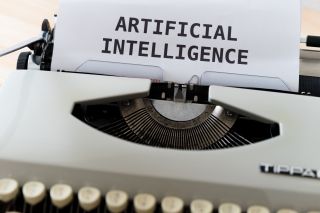ChatGPT-type technology and other types of AI are powering many of the edtech apps used in school and changing the way students learn. This should also change the way educators teach, says Lance Key.
Utilizing AI (artificial intelligence) technology effectively and preventing misuse of it in the classroom is not something for which most teachers, even recent education graduates, have been trained. That’s why Key, a support specialist for the Putnam County School System in Cookeville, Tennessee, believes professional development (PD) geared toward AI is needed.
Key would know. He specializes in helping teachers incorporate technology into their classroom and has delivered more than 400 edtech PD trainings across the country. He has also worked with ViewSonic to develop and provide training on the proper use of panels in the teacher's classroom, and was recently awarded Best Example of Professional Development at a Tech & Learning Regional Leadership Summit in Georgia.
Key grew up in Carthage, a small town in Tennessee, and became the first person to graduate college in his family thanks to a love of working with children fostered by his mom and grandmother, who both ran daycare centers in town. While Key had a gift for math, he also struggled with ADD and dyslexia.
“School never was fun for me,” he says, hoping that as an educator he could change that with his students. “I wanted to make learning fun.”
This 'learning should be fun' philosophy is at the heart of the approach he advises educators take when it comes to AI.
AI PD: Don’t Fear The Technology

Currently, generative AI tools such as ChatGPT are in the “ban it” phase at many schools. “It's just like every other piece of technology, at first we try to fight it, and then we eventually, five or six years later, embrace it, and we figure out, ‘Oh man, we should have just been using this from the beginning.'”
Key advocates training school leaders and classroom educators on AI technology so they can make better-informed decisions regarding it. “If you don't know, it's all threatening. And you're thinking, ‘Oh, my gosh, my kids are just gonna cheat now and they're just gonna get information from here, and how am I going to tell if it’s really their work?'”
Instead, Key says, educators should learn what AI is, what it can and can’t do, what ways can it be used to enhance learning, and what are some pitfalls to teach students to avoid.
Teach Digital Citizenship for AI
Key compares the current situation with AI to the emergence of digital citizenship in schools.
“Digital citizenship didn't exist for years, and then we were like, ‘We've got to teach these kids how to be internet smart and internet safe,'” Key says. He believes those lessons should now be expanded to incorporate AI, and that teachers should show students how to watch out for inaccurate responses generated by AI as well as other limits of the technology and the ethical implications.
Find Ways Students Can Use AI Appropriately
While there’s been a lot of focus on students using ChatGPT and other AI tools to generate papers or skip work, there are also many ways in which AI can be used to facilitate student learning.
For instance, Google’s feature that suggests words as you type can help certain students. “Some students that I've worked with who struggle with writing, getting started has always been a problem,” Key says. “This is kind of a kickstarter to say 'Well maybe we'll use this word here,’ or ‘Let's start the sentence like this,’ and then they can start seeing their thoughts on paper.”
Image generation tools can also be used to help students with vocabulary and word recognition, and there are many ways in which the tools can help students learn math, science, and other topics.
Key points out that the world is changing and students will be expected to know how to utilize these tools in their future careers. “We’re going to be behind the eight ball if we don't learn how to incorporate this,” he says.
Use IT To Save Teacher Time
Key also believes an important application of AI will be to help ease the burden on time-strapped educators. For example, AI tools can now generate slide shows, quizzes, lesson plans, graphics and art, and even videos featuring AI avatars.
Key and teachers he works with have used AI tools to do all of the above. He says that when he's used it to generate slide shows, he's had to tweak the AI-generated initial draft, but it has still saved time and made him work more efficiently, which is of great value to educators.
“We don't have enough time in the day,” he says. “If I can have something create something for me that I would need an hour or so for, such as a document or a flyer or something like that, why would I not take advantage of that?”
- 5 Ways To Teach With ChatGPT
- What is SlidesGPT and How Does it Work for Teachers? Tips & Tricks
- 4 Ways to Use ChatGPT to Prepare for Class
To share your feedback and ideas on this article, consider joining our Tech & Learning online community here
